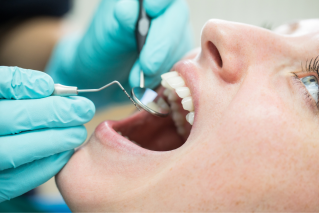TND explainer: Why the government is cracking down on vaping


The federal government is tightening the regulations pertaining to vaping, largely to protect younger people.
Sorry, kids. No more vaping at the bus stop on the way home from school.
At least, that’s the plan of the federal government, which this week announced e-cigarettes are to be heavily regulated.
The idea is to restrict the importation and use of e-cigarettes as a prescription-only pharmaceutical product.
Available only in chemists
E-cigarettes will be available only in pharmacies, with pharmaceutical-style packing for people trying to give up smoking.
To that end, the government has pledged to make it easier for people to get a prescription for “legitimate” therapeutic use.
Certain flavours, colours and ingredients will be banned, and the amount of nicotine restricted.
“These are supposed to be pharmaceutical products,” Health Minister Mark Butler told the National Press Club.
“They have to present that way – no more bubblegum flavours, pink unicorns or vapes disguised as pens for kids to hide in pencil cases. Instead, we will have plain packaging with plain flavours.”
Recreational vaping effectively outlawed
Since October 21, when Greg Hunt was health minister, Australians have needed a prescription to legally access nicotine e‑cigarette products for any purpose. This included importing these products from overseas.
In a new measure, the importation of non-prescription vapes will be blocked. This essentially outlaws recreational vaping, which has become alarmingly popular among teenagers and young people.
And retail settings where vapes are sold as a recreational item, such as newsagents and convenience stores, will face a crackdown.
There’s an argument that these new laws will drive vaping enthusiasts on to the black market – which is what happened many years ago, and continues today, with people seeking cheaper tobacco.
The aim is to protect young people
The main focus of the government’s strategy is protecting children and young people.
An Australian National University study – a systematic review of the global evidence, published in March – found that most use of e-cigarettes is not for smoking cessation, since most smokers who vape continue to smoke and most use in young people isn’t about quitting smoking
The study, which “confirms the health risks vaping poses”, found that e-cigarette use among young Australians has increased “alarmingly” in recent years.
Lead author Professor Emily Banks, from the ANU National Centre for Epidemiology and Population Health, said:
“Recent evidence shows vaping is becoming more popular, especially among children and adolescents, even though it is illegal except on prescription.”
Addiction is common in people using vapes “and young people are especially vulnerable to addiction as their brains are still developing”.
As Health Minister Mark Butler noted, when announcing the new policy, young people who vape are three times more likely to take up cigarettes.
“So is it any wonder that under 25s are the only cohort in the community currently recording an increase in smoking rates?,” he said at the policy launch.
“Vaping is creating a whole new generation of nicotine dependency in our community. It poses a major threat to Australia’s success in tobacco control and the Albanese Government is not going to stand by and let this happen.”
Vaping as a health hazard hotly debated
The impact of vaping on health is hotly debated among scientists.
In 2020, the World Health Organisation expressed reservations about the value of e-cigarettes as a smoking cessation tool.
WHO said “there is no doubt” that e-cigarettes “are harmful to health and are not safe, but it is too early to provide a clear answer on the long-term impact of using them or being exposed to them.”
Public health experts in the UK blew their top, accusing the organisation of spreading “blatant misinformation” about the potential risks and benefits of e-cigarettes.
In a Conversation article published last month, two Australian researchers reported that “detailed reviews of the evidence” had concluded that vaping nicotine was 95 per cent safer than smoking tobacco.
They noted that the “risk of cancer from vaping, for example, has been estimated at less than one per cent”.
The researchers – Professor Nicole Lee, from the National Drug Research Institute, and Brigid Clancy, a PhD candidate in Psychiatry at the University of Newcastle – said the reviews “looked at the known dangerous chemicals in cigarettes, and found there were very few and in very small quantities in nicotine vapes”.
The researchers said the idea that “we won’t see major health effects for a few more decades is causing more alarm than is necessary”.
The problem with that argument
E-cigarettes are completely different to old fashioned cigarettes.
E-cigarettes use a battery to heat up liquid that usually contains nicotine, flavorings, and other additives.
This creates an aerosol instead of smoke. Users inhale this aerosol into their lungs. E-cigarettes can also be used to deliver cannabinoids such as marijuana, and other drugs.
One of the main concerns: the full range of chemicals used in those flavourings and other additives isn’t known.
Stop comparing vaping with smoking
In a 2019 Conversation article, Professor Ilona Jaspers, an inhalation toxicologist at the University of North Carolina writes:
“E-cigarettes are a fast evolving consumer product with ever-changing devices and chemicals, creating mixtures and exposures of unknown health consequences”.
Hence, their true safety profile needs to come from a direct analysis of what’s in an e-cigarette and what those ingredients might do to a body over a period of time.
Professor Jaspers believes that scientists and policymakers should “completely stop” comparing vaping outcomes to smoking outcomes.
Like apples and oranges
“Considering that the compounds inhaled through cigarette smoke are very different from those inhaled through the vast number of different flavored e-cigarettes and vaping devices, wouldn’t that be like comparing apples and oranges?”
Professor Jaspers also makes the point that it took decades for scientists to recognise and prove that smoking tobacco was deadly and disabling.
She says that the true impact of e-cigarettes is probably three decades away.
What does the evidence suggest?
Risks identified in the ANU review included poisoning, especially in small children, seizures and loss of consciousness caused by nicotine overdose, headache, cough, throat irritation, and burns and injuries, largely caused by exploding batteries.
There is also emerging evidence that vaping is harmful to your heart, lungs and vascular system. While the evidence is suggestive, it’s also mixed.
For a review of some of these studies, go to the reliable healthine.com – a health site that routinely provides multiple links to research.
A 2018 report from the National Academies Press (NAP) found significant evidence that taking a puff from a nicotine e-cigarette triggers an increase in the heart rate and blood pressure.
A 2019 study found that e-cigarettes were associated with an increased risk of a stroke, heart attack, angina, and heart disease.
However, a 2019 nationwide survey of nearly 450,000 participants found no significant association between e-cigarette use and heart disease.
The smoking gun?
Canadian researchers have found that vaping might make you work harder at taking a breath.
This is because vaping affects pulmonary surfactant – a layer in the lungs made up of lipids and proteins that allows people to breathe with minimal effort by reducing surface tension.
This is apparently the first study to demonstrate that using e-cigarettes results in a unique inflammatory response in the lungs that is different to the response seen in cigarette smoking.
The researchers found that people who use e-cigarettes, experience greater lung inflammation compared to cigarette smokers and non-smokers.
“We would like to get this information out there so that people know vaping may be damaging to the lungs,” said co-author Professor Ruud Veldhuizen, of Western University, Ontario.
“As a next step, we hope to further investigate the effects of vaping on the lungs and how we can treat resulting injury.”








